The Precursor
I know I have to lead with the history-altering skeletonised Credor, but every fibre of my being wants to go with the new Morpho I just discovered.
I’ve always maintained Seiko only used the Morpho dial once, but it turns out I was wrong. A lesser known, vintage piece was blessed with the same hue-shifting dial, and I’ve included a write-up about it at the bottom of the newsletter. Before you hastily scroll down to it, please know that while this isn’t technically clickbait, it will leave you feeling disappointed as though it had been.
One small bit of housekeeping - a couple of people mentioned last week that my email went to their “Promotions”, or “Other”, tab. Please move it to your Primary inbox to prevent that from happening in the future. Sorry!
Credor GBBD987 Skeletonised Platinum 6899
When two master craftsmen collide. In 1996, two of Seiko’s most decorated employees created a watch that shaped the future of Japanese haute horlogerie.
That watch in question was the Credor GBBD987 - a skeletonised dress piece in solid platinum, housing the razor-thin 6899 calibre. Mamoru Sakurada designed, built, and assembled the movement, while Kiyoshi Terui engraved every available millimetre by hand. To them, it was more than just a watch - it was a signal to the watch world that Seiko was upping its game.
A few years later, in 2004, Sakurada and Terui would become two of the three founding members of the now-famous Shizukuishi Watch Studio - the birthplace of all mechanical Grand Seikos and select Credors. Today, they’re often considered to be two of the greatest artisans in Seiko’s modern history, and this watch has the distinct honour of being their first known partnership.
Remarkably, both men worked well into their golden years. Sakurada joined Seiko in 1965, and while I’m not able to find official confirmation of his retirement, in the mid-2010s a handful of 68-series movements emerged bearing his engraved signature. This was first time he signed his assembly work, so it seems sensible to view these as his farewell.
Terui, meanwhile, is still engraving in his 70s. His most recent project, the GBBY975 “Goldfeather”, proves that age hasn’t dulled his touch - nor his relevance.
Their work on the 6899 series remains a technical benchmark. Assembling the movement was a reactive process for Sakurada - piece by piece, each component is shaped and fitted on the fly against the one that came before it. Tolerances of 0.03mm are judged by touch alone.
Sakurada’s protégé, Katsuo Saito, spent five years under his tutelage before he was trusted with a full build. And today, Saito himself has been training his own successor for four years.
Terui’s standards are no less punishing. While the calibre itself is only 1.98mm thick, some sections are as thin as 0.25mm. In order to maintain structural integrity, he works to a maximum engraving depth of 0.15mm – all checked by his touch, with a sensitivity refined over decades. His successor, Tsune Ogawa, trained for four years before earning the right to put his mark on a real 68 movement.
For these achievements, both men were awarded the Yellow Ribbon - a rare distinction granted by the Japanese Government to individuals whose mastery of an industry is considered irreplaceable.
And yet, for all its technical brilliance, the GBBD987 remains poetic. Its skeletonised bridges were shaped to resemble bamboo stalks swaying in the wind, and Terui’s engravings feature traditional Japanese motifs, including the Chrysanthemum flower - the Imperial Seal of Japan. The case, made from 950 platinum, carries unexpected heft for such a modestly sized dress watch, grounding it with quiet power.
The result is not just a rare Credor, or an early example of the 6899. It’s a deeply Japanese artifact - humble in scale, immense in meaning, and rooted in the lives of two master craftsmen at the start of a shared journey that altered the trajectory of Seiko forever.
The Credor GBBD987 is now available to buy on our website
In great condition overall. Small hairlines on the platinum case can be seen on close inspection. Original buckle and on a Credor leather strap (unknown if original).
Grand Seiko “9&9” SBGA371 (LE 500)
A striking design, with a unique design origin. Yasushi Akimoto describes time displayed on smart devices as “flavourless” and will find any excuse to gift a watch.
As one of Japan’s most successful producers, he certainly has the means to indulge this habit, but for him, it’s not about the monetary value of the watch - Akimoto believes that by giving someone a watch, you are offering them a true understanding of time and its fleeting nature. You can choose to sit and watch the seconds tick away or use them to do something meaningful. Depressing, but admittedly true.
So when Grand Seiko asked Akimoto to design a watch for them, he chose to highlight the 9 o’clock hour marker in vermillion red. It’s often mistakenly reported that the red 9 serves to remind hard workers when their day should start and end (9am to 9pm). This plays into the salaryman stereotype in Japan, so you’ll find that explanation scattered across the internet, but the real reason is more nuanced.
Akimoto sees 9am as the time you do your most important work. It’s fairly common for office workers in Japan to arrive at work at 8am, in order to spend time building up to their most important tasks. In a mirrored philosophy of his ideal morning, Akimoto thinks if you start drinking at 8pm, you should hit the sweet spot by 9pm! If you can learn to balance both nines, you’ll live a good life according to Akimoto.
Interestingly, the coppery-pink hue that graces the dial has been promised to Akimoto as his colour. Grand Seiko has said they will never use it on another watch again. The exclusivity doesn’t stop there as the SBGA371 was released as a Limited Edition for the AJHH (Association Japon de la Haute Horlogerie), meaning it was only available in AJHH-affiliated stores. A colourway exclusive, sold as a store-exclusive, wrapped inside a country-exclusive.
Fancy.
However, if you do manage to get your hands on a SBGA371, I’m confident you’ll feel the juice was worth the squeeze.
The Grand Seiko SBGA371 is available to buy on our website
In very good condition overall. Just serviced. All original apart from the strap and buckle. The watch show signs of aging and wear, but nothing unusual from a watch this old. Miniature pin included.
Seiko “Age of Discovery” 6M13-0010
The 6M13-0010 is a classic part of Seiko’s 1990s “Dancing Hands” collection. Released to commemorate the 500th Anniversary of Christopher Columbus “discovering” the Americas. While the globe dial and a Santa Maria caseback give the 6M13 a unique look, the real star of the show are the Dancing Hands, and if anyone hasn’t had the pleasure of seeing them in action, please click here to watch a short video.
The three central hands double up to become six different pointers, based on the mode you’ve selected. The blue tips are used for time related complications, while the red tips are are used for the calendar functions.
The perpetual calendar displays Day, Date, Month, and the full four-digit year (in case you forget which century you’re in), and it even accounts for leap years. There’s also a search mode - if you to input the year, month and date, the watch will spit out the day. Is this feature crucial? Absolutely not, but it certainly adds to its charm.
And because the watch can track dates from 1400 to 2400, the calculations actually switch from the Julian Calendar to the Gregorian Calendar in 1582!
For its final trick, it has both a daily and fixed date alarm, allowing you to simultaneously set a daily alarm to wake you up, and a separate alarm to remind you about the 2pm work meeting next Tuesday.
The Seiko 6M13-0010 is available to buy on our website
In very good condition. Minor hairlines can be seen on the case, but all of the plating is still in tact. On the original strap.
Seiko “Morpho Ring” 17-0850
I’m not entirely sure this is a cause for celebration. It’s always struck me as odd that Seiko created one of the most mesmerising dials in its history - the butterfly wing “Morpho” used in the 3883-7000 - and then only used it once. So when I later discovered they did reuse it, but in a ring watch… I felt more insulted than satisfied.
That’s not to say there’s anything inherently wrong with ring watches. But while posing for the photos above, it occurred to me that I might be one of the only people to have worn one since the late 1980s. They’re simply victims of the era - so I probably shouldn’t hold it against them.
Ring Watch roasting aside, this one is surprisingly well put together. The dial is unmistakably a true Morpho, not a watered-down variant. Its gonio-apparent surface shimmers with the same intensity as the original, and the radial, multi-faceted ring “bezel” (can I call it a bezel? Do rings have “bezels”?) draws your gaze towards the indigo hues. The stepped sapphire crystal is a scaled down copy of the one found on the 3883-7000, and hidden inside is a cute little hand-wound calibre 17.
I promise I didn’t go looking for it. When I stumbled across the auction listing, I did a double take. The photos were all I had to go on, and the photos weren’t good - as is the case with most Japanese auctions. I was maybe 30% confident it was a Morpho dial at all. I rolled the dice and won - or lost, depending on how you view this strange watch
I’m not going to insult my readers’ tastes by formally listing it for sale, but if any of you are brave enough to wear it, feel free to get in touch via email, Reddit, or Instagram. I’m sure we can work something out.
It’s not Japanese, but it’s pretty neat…
Carlo Ferrara “Le Cirque” Dancing Regulator (LE 300)
A modern spin on the classic Carlo Ferrara watch. If you thought the complication itself was bold, this limited edition Dancing Regulator will blow you away.
Le Cirque uses the same modified movement as the CF1997 I featured previously, and the wandering hands are just as mesmerising to watch - transforming the simple act of telling time into a kinetic performance.
Art History is not my strong suit, so the inspiration behind the distinctive dial design eludes me. It’s clearly modern and interpretative - do the shapes in the middle of the dial depict circus performers putting on an impressive acrobatic display, much like the hands themselves? Possibly, but without an original source, I can only speculate.
And trust me, I’ve looked. I even ran cached versions of the old Carlo Ferrara website through a Flash emulator. Remember Flash? The ‘00s version of their site is wrapped in a dreadful Flash container, so it can do essential tasks like helpfully auto play music and videos while you try to navigate its pages.
Even with the emulator, most of the cached site is broken (thanks Flash) - so if you recognise the art on the dial as being in the style of something specific, please let me know.
On my e-travels, I did stumble across an old interview with Mr Ferrara in which he talked about the international interest in his designs. While Europe was obviously his largest market, he noted with great intrigue and delight that Japan was, unexpectedly to him, the second largest.
Definitely not unexpected to me - show me an unconventional watch and I’ll show you 124 million potential customers (I’ll admit, painting Japan’s entire population as a viable customer was an exaggeration - the watch is clearly too big for under 12s, but everyone else is probably interested).
The Carlo Ferrara Le Cirque is available to buy on our website
In great condition overall. No marks of any real significance. Original strap. Box and papers… and absurdly large display stand.
Watches you’ve seen before…
The Return of a King. One of Seiko’s only full-sized watches with a Mother of Pearl dial. If you missed any of the original write-ups for each watch, please click on the respective link below:
Credor “Mother of Pearl” GCBZ999
Campanola “Grand Complication” CTR57-1101
Seiko “Sort of an Alpinist” LHAM601
And all are available to buy on our website:
Don’t forget to follow my Instagram to see all of the watches above in full cinematic glory next week.





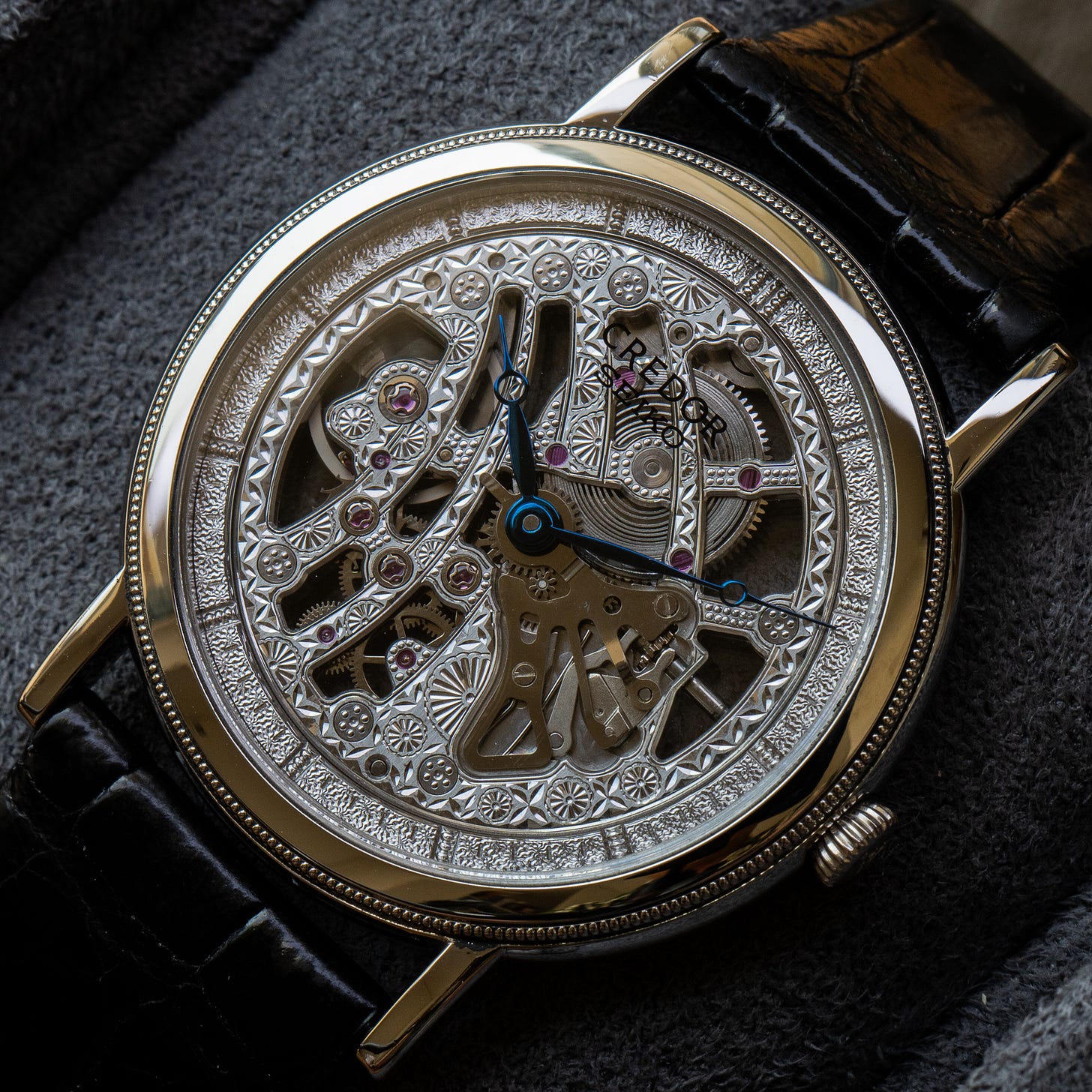










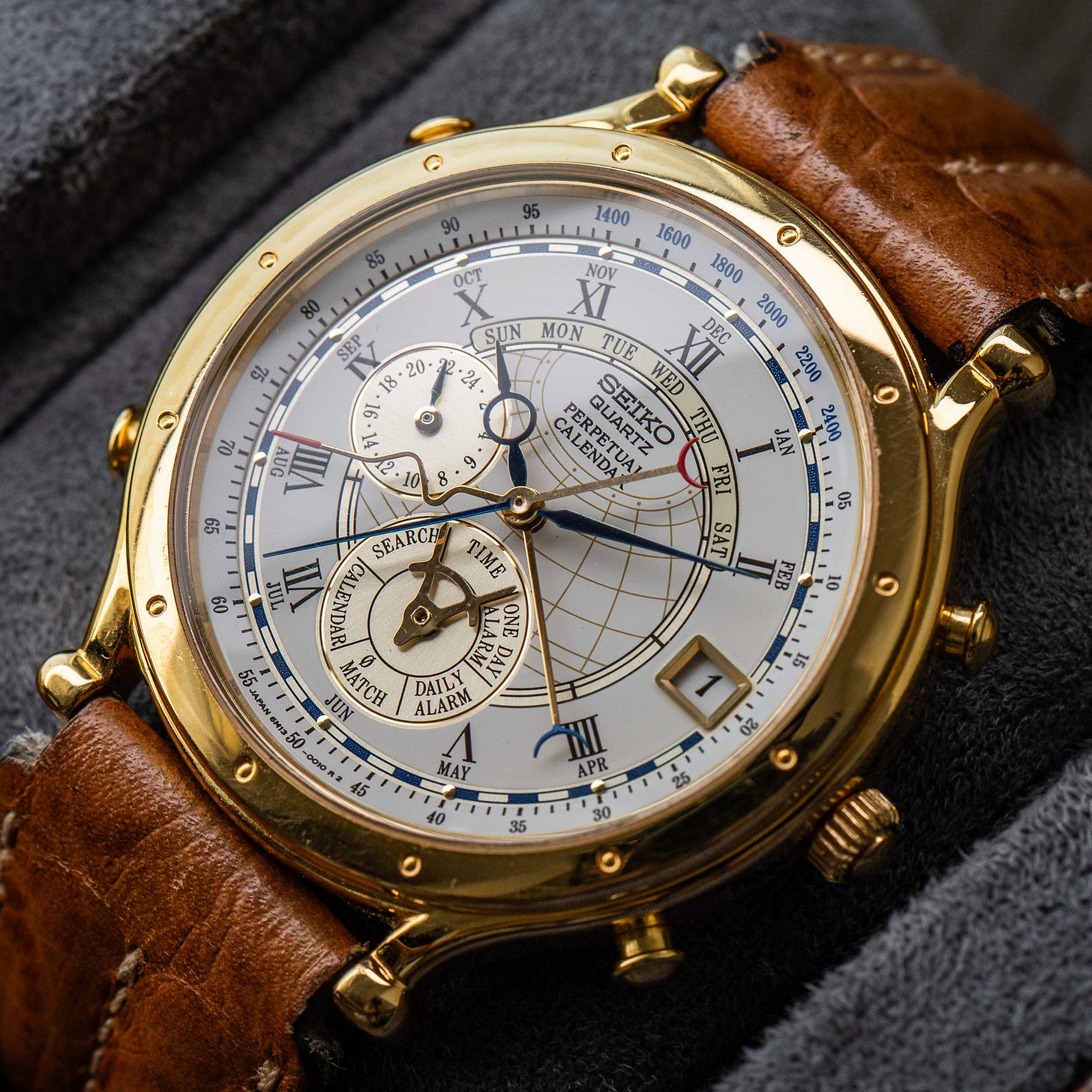
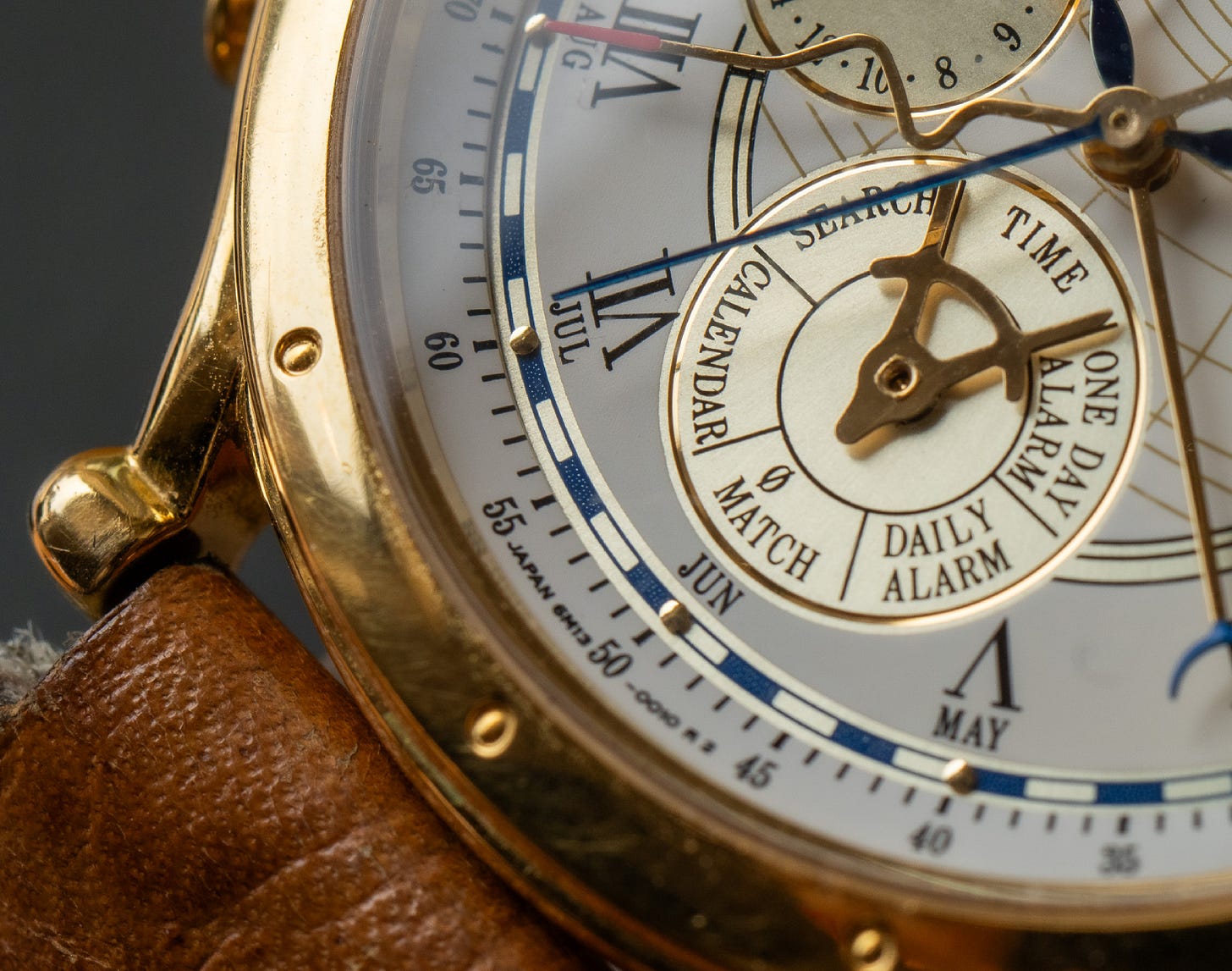


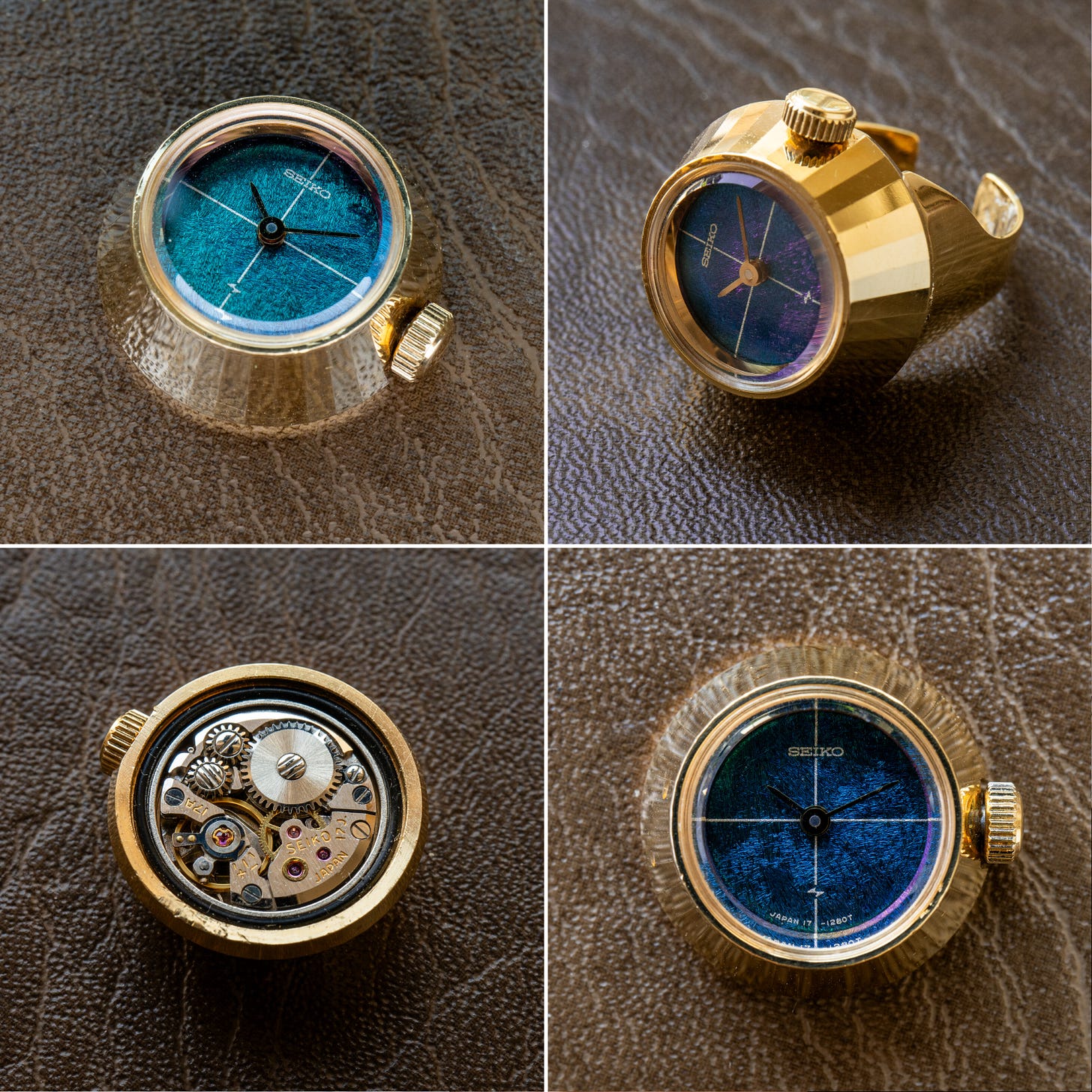
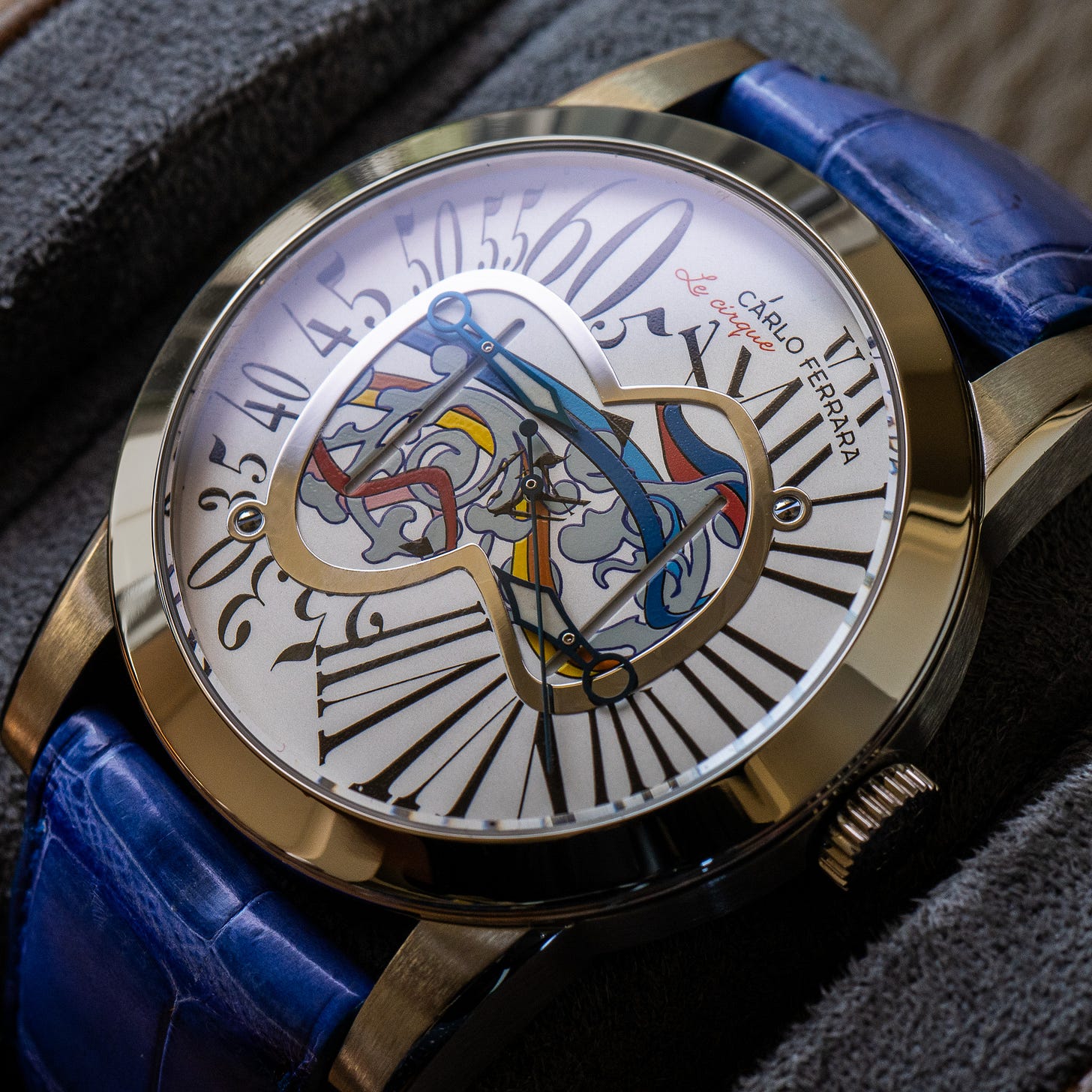



Superb edition. Every watch a winner! Never knew about the Julian/Gregorian calendar switching :)
There is at least one more Morpho by the way...